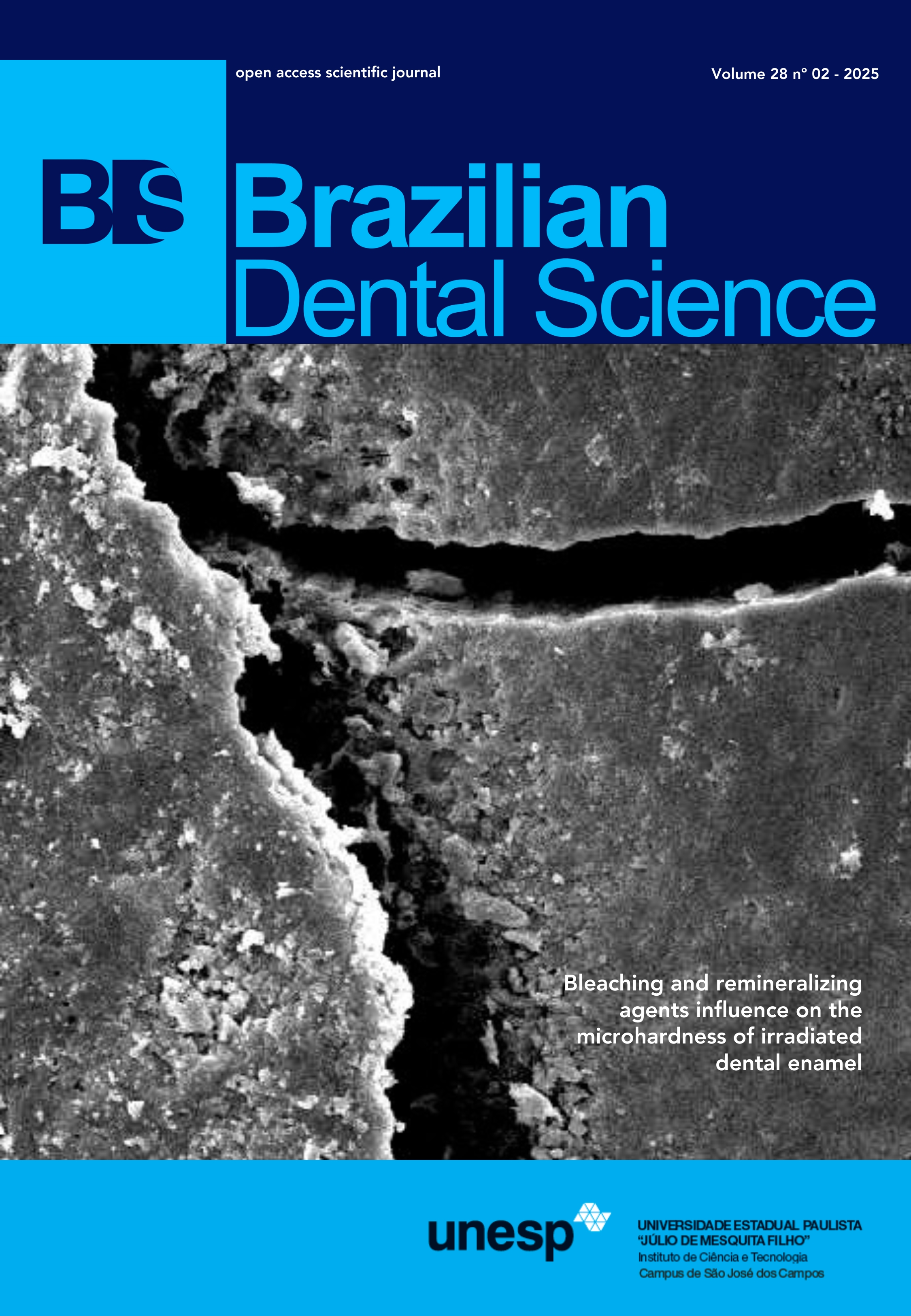Analysis of the relationship between anxiety symptoms and temporomandibular disorder in undergraduate dental students
DOI:
https://doi.org/10.4322/bds.2025.e4501Abstract
Objective: To evaluate, through the application of validated questionnaires, whether the level of anxiety symptoms was associated with the occurrence of painful Temporomandibular Disorders (TMDs) in undergraduate dental students. Material and Methods: To check the occurrence of symptoms of anxiety disorders the GAD-7 (Generalized Anxiety Disorder – 7) questionnaire was applied and to diagnose TMDs the DC/TMD (Diagnostic Criteria for TMDs) was administered to 60 patients. Participants were divided into two groups: control (Co), composed of students without TMD diagnosis (n=30), and experimental group (Exp), composed of students with a TMD diagnosis (n=30). The acquired data underwent descriptive analysis and statistical treatment using chi-square or Fisher’s exact tests. Results: The results showed a significant relationship between moderate and severe anxiety levels with the occurrence of TMDs (p < 0.001), not being related to a specific type of these disorders (muscular and/or joint) (p = 0.071). Regarding sex, it was observed that it does not influence the occurrence of TMDs (p = 0.778). However, sex was related to anxiety levels (p < 0.001), with males in our study being associated with moderate and severe levels of anxiety symptoms. Conclusion: It was concluded that anxiety is associated with the occurrence of painful TMDs in dental students, with moderate and severe levels of anxiety symptoms being more prevalent in individuals with TMD.
KEYWORDS
Anxiety; Dentistry students; Orofacial pain; Stress; Temporomandibular Joint Dysfunction Syndrome.
Downloads
Published
How to Cite
Issue
Section
License
Brazilian Dental Science uses the Creative Commons (CC-BY 4.0) license, thus preserving the integrity of articles in an open access environment. The journal allows the author to retain publishing rights without restrictions.
=================




























